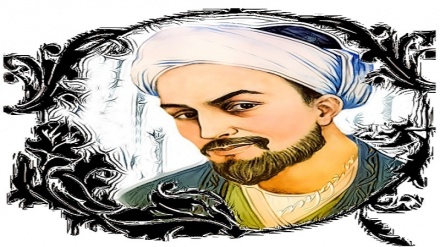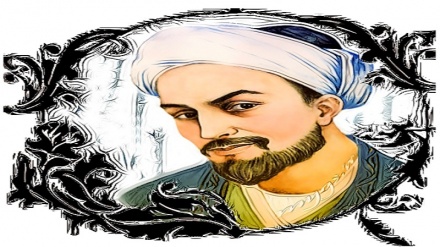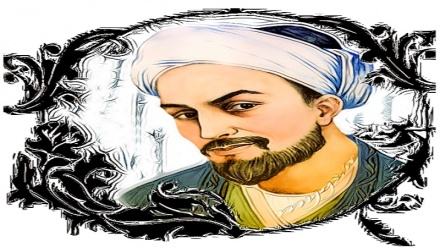Iranian notables, sources of global honor (196)
Fakhr od-Din Ibrahim bin Bozorgmehr Hamedani was born in the village of Komjan, near the city of Hamedan in western Iran, in 610 AH, corresponding to 1213 AD, in a virtuous and scholarly family.
By the age of 17 he was lecturing in the school of Hamedan after having memorized the holy Qur’an and mastered the sciences of the day, including Persian and Arabic literature. He then travelled to Multan in what is now Pakistan, where he became a disciple of the mystic Shaikh Baha od-Din Zakariya, married the latter’s daughter, and lived there for twenty-five years, before leaving for Arabia for pilgrimage to the holy cities of Mecca and Medina. He then travelled to Konya in Anatolia or what is now Turkey, where he became a good friend of the famous Persian mystical poet, Mowlana Jalal od-Din Balkhi Roumi. Here at the age of 60 he completed his famous Divan of Persian poetry. He also met Sadr od-Din Qunawi – the disciple of the famous Spanish gnostic Mohi od-Din Ibn Arabi. He lived for a while in Egypt, and then settled in Damascus, Syria, where he passed away in 688 AH at the age of 78 lunar years.
As we said last week, besides his voluminous divan which contains 5800 couplets, which are mainly ghazals or lyrics on mystical topics, Fakhr od-Din Eraqi also excelled in prost writing. His famous work in this field is “Lama’at” or Divine Flashes. This is a short mixed prose and poetry classic, and was inspired by Sadr od-Din Qunawi’s lectures on Ibn Arabi’s works. It has twenty-seven chapters, and like Ibn Arabi’s famous “Fosous al-Hekam” or Bezels of Wisdom, there are a few formal resemblances.
The “Lama’at” has been translated into English, French and Swedish. His only other known prose work is a letter to Ṣadr-od-Din Qunawi.
In “Lama’at” Fakhr od-Din Eraqi speaks of love and admiration in a poetic style, mixed with prose that resembles the “Golestan” or Rose Garden, of his famous contemporary and compatriot, Sheikh Mosleh od-Din Sa’di of Shiraz.
It is said the “Lama’at” could well be called a lead in introduction of Ibn Arabi’s thoughts to Persian speakers through the interpretation of Sheikh Sadr od-Din Qunawi. Fakhr od-Din Eraqi, however, says that his work was inspired by the mystical Persian book “Savaaneh” of Ahmad Ghazali, though “Lama’at” is shorter in volume. According to modern day commentators the “Lama’at” unites Ahmad Ghazali’s thought to that of Ibn Arabi’s.
The style of “Lama’at” is a simple, dignified, fluent, and rich with ayahs of the holy Qur’an and Arabic phrases. Its theme is ‘Divine Love’. This captures the attention of readers.
For instance in a couplet Fakhr od-Din Eraqi says:
“The heart sat gleefully with the friend, since it had forsaken the soul;
It conjoined the soul with the Beloved and cosmos, having cut off both the worlds”.
Many commentaries have been written on the “Lama'at”, of which seven are well-known. The most important of these was authored by the poet Abdur-Rahman Noor od-Din “Jami” in the 15th century. Jami has pointed out that he has personally read other commentaries on the “Lama'at”, adding that words of Eraqi in his signature book are better understood than that of the commentaries.
In conclusion we present a quatrain from Fakhr od-Din in his mystical work:
“And my heart—if it could somehow just apprehend
The mountain-pass which they traversed.
Do you suppose they made it safely?
Or do you suppose that they have perished?”
MR/AS/ME


